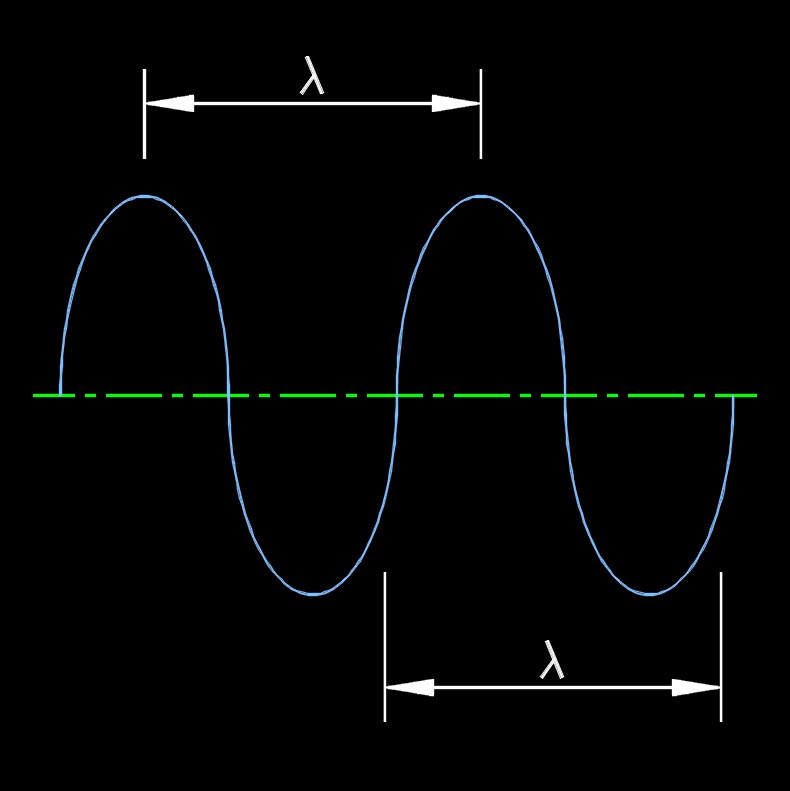Wavelength
Wavelength formula |
||
|
\( \lambda \;=\; \dfrac{ v_w }{ f }\) (Wavelength) \( v_w \;=\; \lambda \cdot f \) \( f \;=\; \dfrac{ v_w }{ \lambda }\) |
||
| Symbol | English | Metric |
| \( \lambda \) (Greek symbol \lambda) = Wavelength | \(ft\) | \(m\) |
| \( v_w \) = Wavelength Velocity | \(ft \;/\; sec\) | \(m \;/\; s\) |
| \( f \) = Frequency | \(Hz\) | \(Hz\) |
 Wavelength, abbreviated as \(\lambda\) (Greek symbol \lambda), is the distance between the crests of a wave. Each wave has a shape and length. The wavelength of a wave is the distance between two consecutive points that are in phase (two successive peaks or troughs), and it is inversely proportional to the frequency of the wave. In general, waves with shorter wavelengths have higher frequencies, and waves with longer wavelengths have lower frequencies.
Wavelength, abbreviated as \(\lambda\) (Greek symbol \lambda), is the distance between the crests of a wave. Each wave has a shape and length. The wavelength of a wave is the distance between two consecutive points that are in phase (two successive peaks or troughs), and it is inversely proportional to the frequency of the wave. In general, waves with shorter wavelengths have higher frequencies, and waves with longer wavelengths have lower frequencies.

